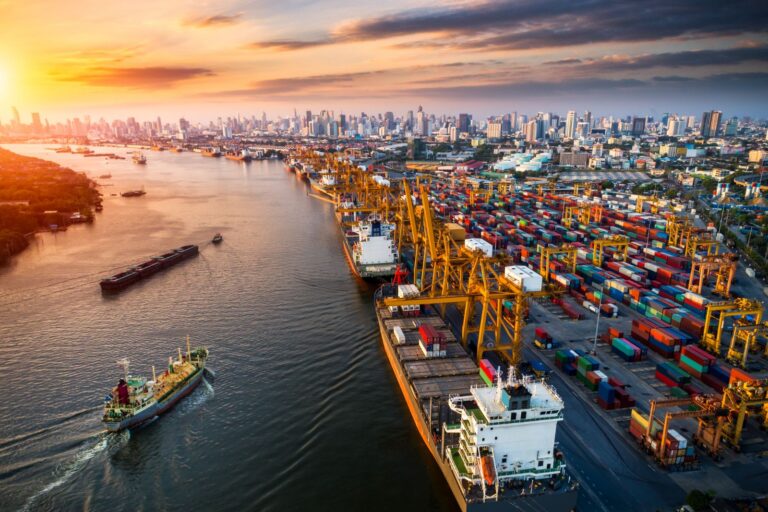Shipping goods internationally involves more than just transport logistics. One of the most critical elements is having the correct documentation. Missing or incorrect paperwork can lead to delays, fines, or even cargo seizure. This is where a freight documentation checklist becomes indispensable.
Whether you’re exporting goods from Australia or importing into another country, a well-prepared documentation checklist ensures compliance, faster customs clearance, and seamless delivery. At EGL – Emerald Global Logistics, we help businesses across Australia navigate international shipping documentation with ease, providing tailored solutions for every freight requirement.
This guide covers all essential documents, best practices, common mistakes, and tips to simplify your freight process.
Why Freight Documentation Matters
Correct documentation:
- Ensures Legal Compliance: Meets international shipping regulations.
- Facilitates Customs Clearance: Reduces delays at ports.
- Protects Against Loss: Acts as proof of ownership and shipping terms.
- Optimises Supply Chain Efficiency: Streamlines operations from origin to destination.
Key Documents in a Freight Documentation Checklist
1. Bill of Lading (B/L)
- Acts as a contract between shipper and carrier.
- Confirms receipt of cargo.
- Types include: Straight, Negotiable, and Sea Waybill.
2. Commercial Invoice
- Provides details of goods, value, and buyer/seller info.
- Used for customs valuation and duties calculation.
3. Packing List
- Lists contents of each package, weight, and dimensions.
- Essential for customs inspection and inventory verification.
4. Certificate of Origin
- Confirms country of manufacture.
- Required by some countries for duty exemptions.
5. Insurance Certificate
- Covers potential loss or damage during transit.
- Often required by banks for letter of credit transactions.
6. Import/Export Licenses
- Required for restricted goods or regulated commodities.
- Varies by country and product type.
7. Letter of Credit (if applicable)
- Ensures payment security between buyer and seller.
- Provided by banks as part of trade finance.

Step-by-Step Guide to Using a Freight Documentation Checklist
- Identify Shipment Type: Determine whether it’s import, export, or transshipment.
- Gather Required Documents: Use the checklist to collect invoices, B/L, licenses, and certificates.
- Verify Accuracy: Check all details for correctness, including quantities, HS codes, and shipping addresses.
- Submit to Relevant Authorities: Provide documents to customs, banks, and carriers as needed.
- Keep Copies: Maintain duplicates for reference and dispute resolution.
At EGL, we assist Australian businesses in compiling and verifying freight documentation to prevent delays and errors.
Tips & Best Practices
- Use Digital Copies: Reduce errors and speed up submission.
- Check Regulatory Updates: Customs rules change frequently; stay informed.
- Standardise Templates: Maintain consistent formats for efficiency.
- Double-Check HS Codes: Misclassification can lead to fines.
- Train Staff: Ensure employees handling documentation are fully informed.
Common Mistakes to Avoid
- Submitting incomplete documentation.
- Using incorrect shipping terms.
- Misstating product descriptions or values.
- Forgetting to include insurance certificates.
- Failing to comply with import/export license requirements.
Use Cases & Examples
- Electronics Export: Requires B/L, commercial invoice, insurance, and certificate of origin.
- Food Import: Requires health certificates, B/L, packing list, and import licenses.
- Industrial Machinery: Requires export licenses, B/L, and detailed packing list.
At EGL – Emerald Global Logistics, we tailor documentation support to each shipment type, ensuring regulatory compliance and faster clearance.
Costs & Considerations
- Proper documentation reduces demurrage fees and storage costs.
- Investment in accurate paperwork prevents fines and penalties.
- Using expert services like EGL ensures smooth documentation without hidden delays.
FAQs: Freight Documentation Checklist
1. What is a freight documentation checklist?
- It’s a list of essential shipping documents for smooth freight operations.
2. Why is it important?
- Ensures compliance, faster customs clearance, and reduces shipment risks.
3. Who prepares the documentation?
- Shippers, freight forwarders, or logistics providers like EGL.
4. Can missing documents delay shipping?
- Yes, incomplete or incorrect paperwork can cause significant delays.
5. Are digital documents accepted?
- Many authorities now accept digital copies, but originals may still be required for customs.
Conclusion
A complete freight documentation checklist is essential for hassle-free international shipping. From bills of lading and commercial invoices to insurance certificates and licenses, proper documentation ensures compliance, reduces risks, and speeds up delivery.
At EGL – Emerald Global Logistics, we provide Australian businesses with comprehensive freight documentation solutions tailored to their unique shipping needs.
If you’re ready to streamline your freight operations, contact EGL today for expert support.







